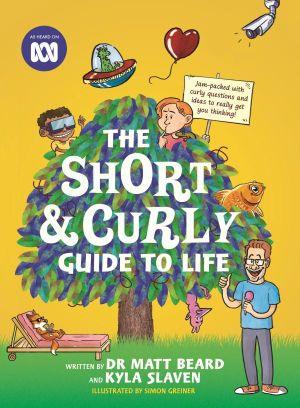Dr. Matt Beard & Kyla Slaven (text) and Simon Greiner (illustrator), The Short & Curly Guide to Life, Random House Australia, October 2018, 192 pp., RRP $24.99 (pbk), ISBN
9780143792185
The Short & Curly Guide to Life is marvelous, based on a popular ABC podcast. It’s philosophy based on case studies, philosophy that asks, how are we to live? How can we make the most ethical decisions when faced with the usual complexities of family life, friendship, the possibility of happiness. For example, should school help you be a better person? Would you rather be happy and ignorant or worried and informed? Would it be good to live forever? What is a useful definition of fairness. Imagine you are not born yet and you don’t know what kind of person you will be when you are born, but you do have the opportunity to set up the rules of the society you will be born into. What rules would you want to see in place before you are born? Hmm.
The tools of ethical investigations are thought experiments, curiosity and empathy, a fine sense for making distinctions between situations, checking out assumptions, fact finding and defining our terms or spelling out what we mean when we use certain words (such as ‘fair’ or ‘integrity’). Investigations in the book are mentored by Matt Beard a philosopher of ethics, and his investigation team is a group of five children aged between nine and twelve. The book begins with the question of whether it’s ever okay to tell lies, and ends with the question, is it okay to break the rules sometimes?
These aren’t easy questions to even think about let alone answer, but there is no doubt that trying to make sense of possible answers is a lot of fun for the brain and a challenge for the human heart. With every question there are many examples and case studies to drives the discussion. Occasionally Matt Beard will let us know what particular philosophers have contributed to thinking about these questions, and that’s sometimes helpful, sometimes unsettling.
A great book for anyone wanting to think about what they do.
Recommended for children 6 to 16 years.
Reviewed by Kevin Brophy


